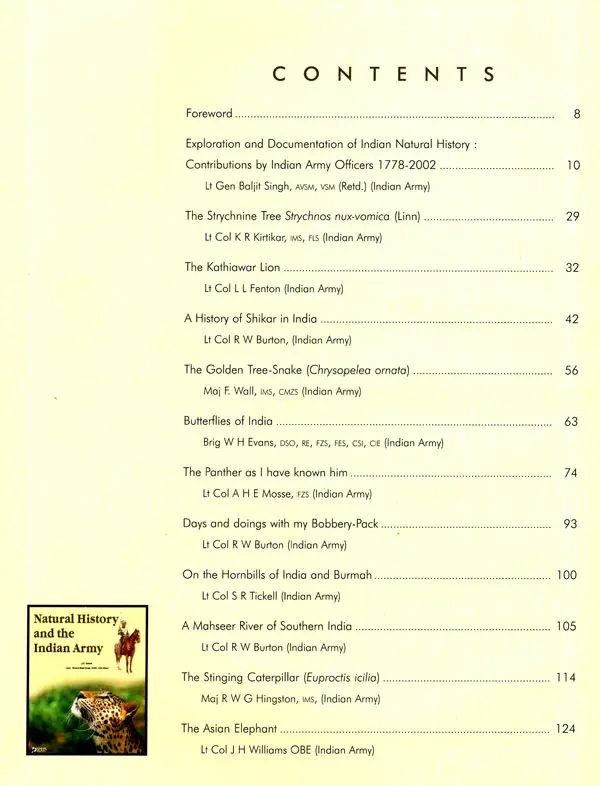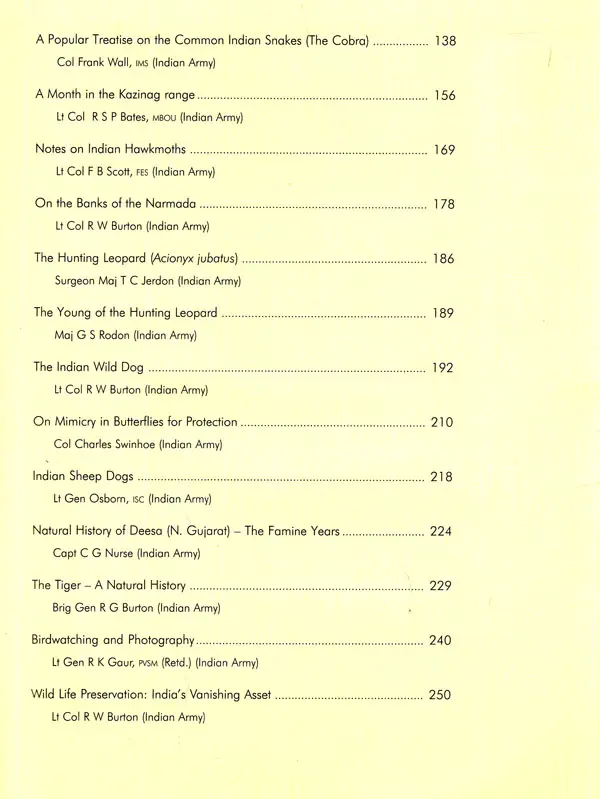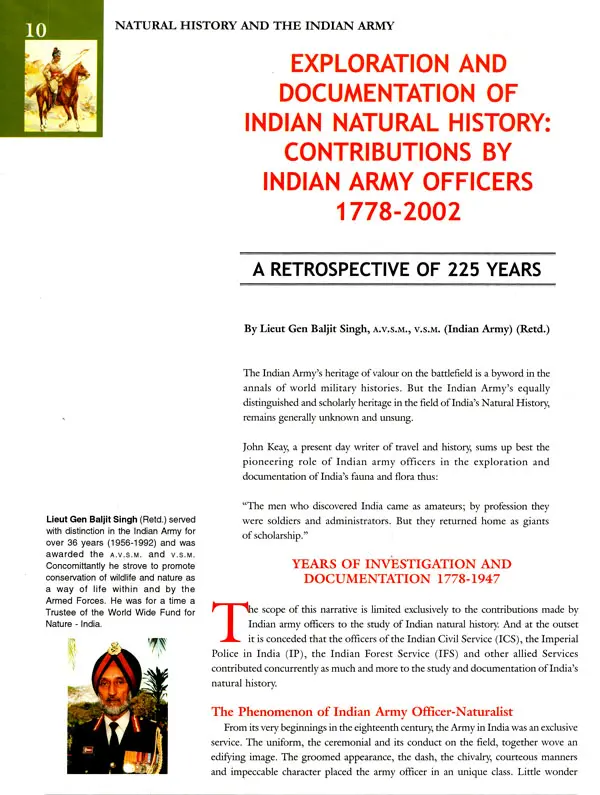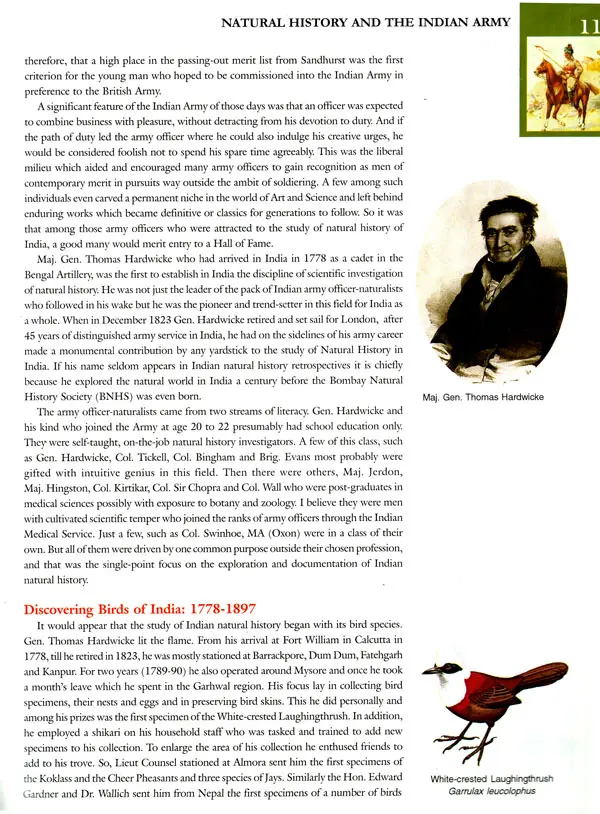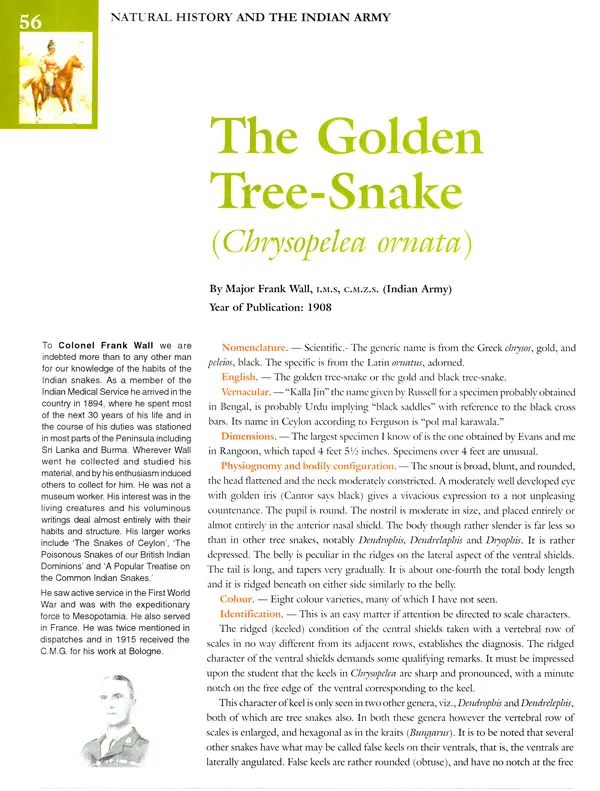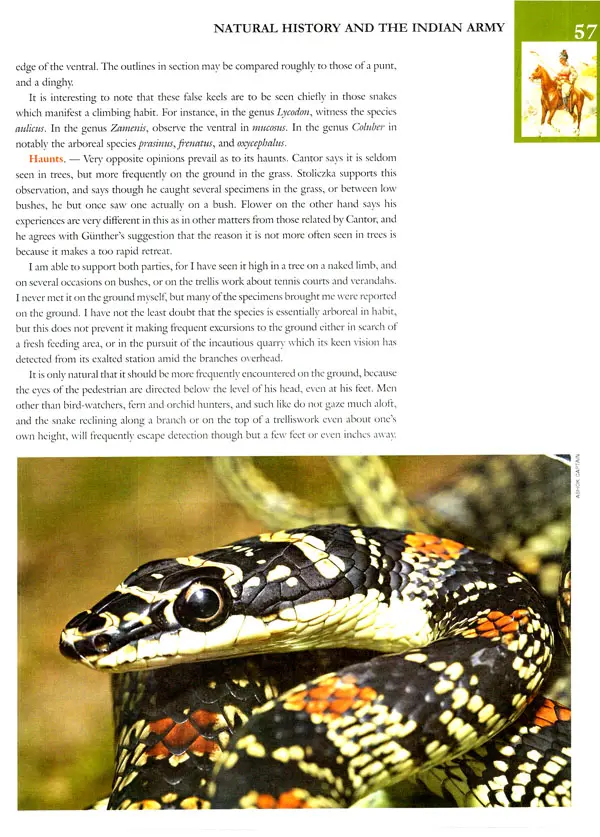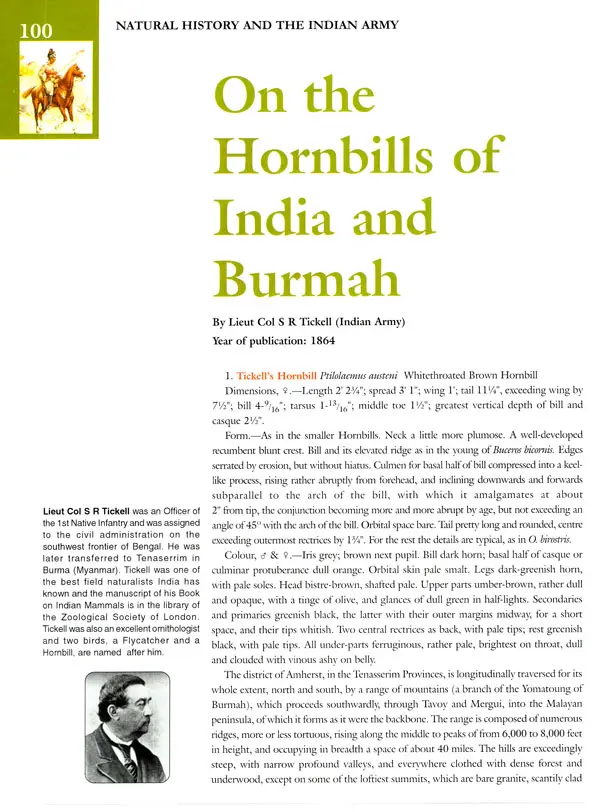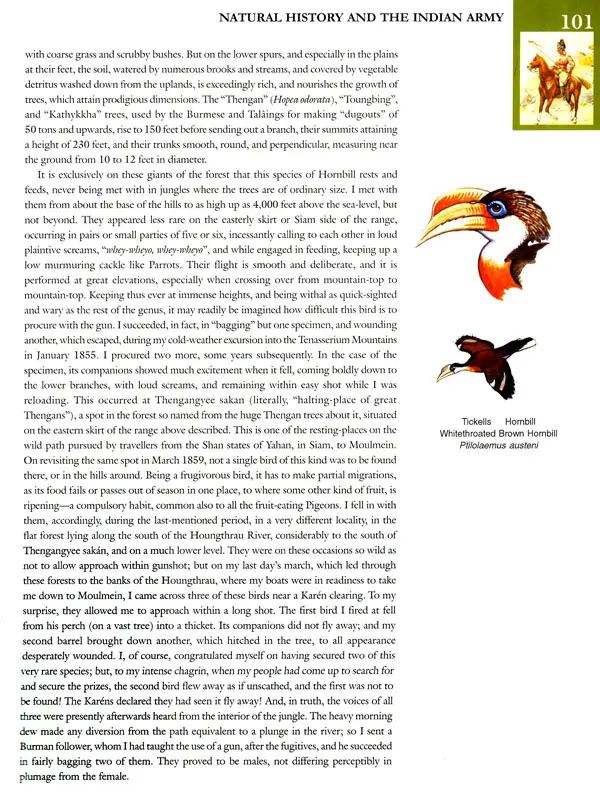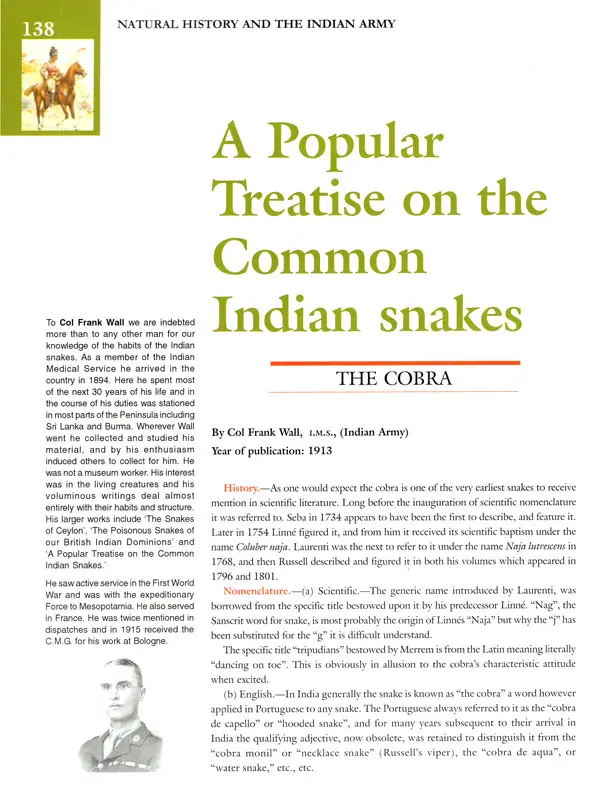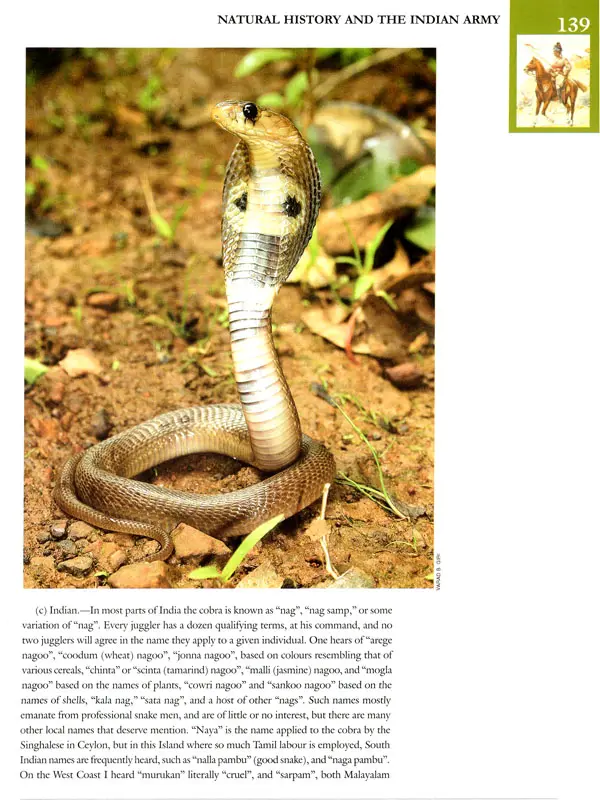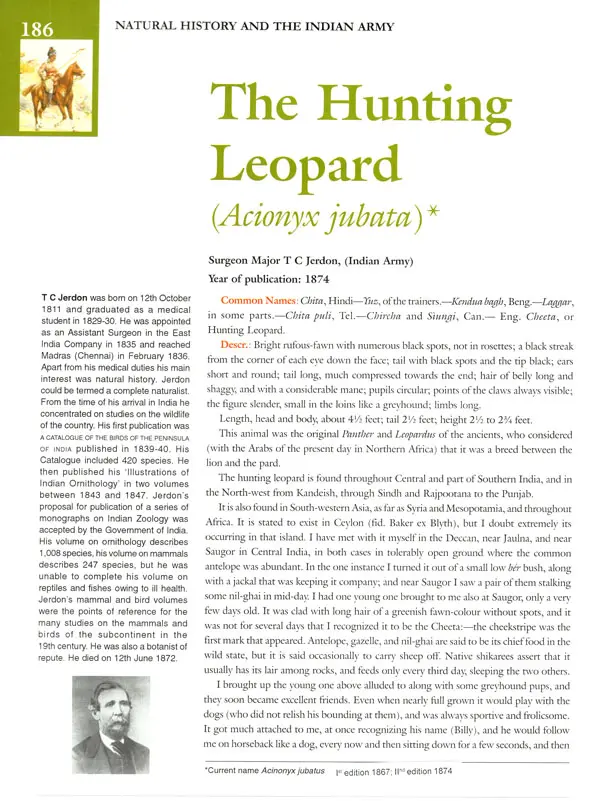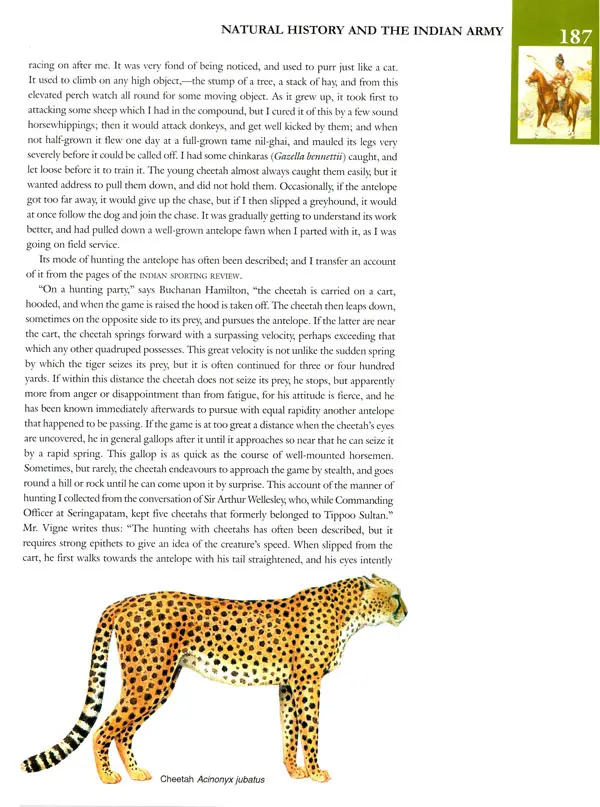
Natural History and The Indian Army
Book Specification
| Item Code: | UAE460 |
| Author: | J. C. Daniel and Lieut General Baljit Singh |
| Publisher: | Oxford University Press |
| Language: | English |
| Edition: | 2009 |
| ISBN: | 9780198064503 |
| Pages: | 260 (Throughout Color Illustrations) |
| Cover: | HARDCOVER |
| Other Details | 11.50 X 9.00 inch |
| Weight | 1.12 kg |
Book Description
J. C. Daniel has been associated with the Bombay Natural History Society from 1950, in various capacities as Research Assistant, Curator, Director, Editor and Honorary Secretary. He has written/compiled books on Reptiles, Leopard, Elephant and Tiger. Has guided Ten Ph.D's. He was a member of the Indian Board for Wildlife and Vice-Chairman, Species Survival Commission, WCU. Has been awarded the Peter Scott Award for Conservation Merit by the WCU. The Indira Gandhi Paryarvaran Puraskar by the Govt. of India and the Distinguished Service Award by the Society for Conservation Biology, USA.
Lieut General Baljit Singh (Retd.) is an active promoter of nature conservation, particularly within and by the Armed Forces, over the last 35 years.
It is a remarkable fact that in the early years, the study of the natural history of the Indian subcontinent was more or less the exclusive preserve of officers of the Indian Army. Beginning with the fading years of the 18th century, some of the natural history inclined officers of the Indian Army studied flora and fauna, particularly fauna, and became experts thereon. Their findings were recorded in various journals in the U.K., but mainly in the Journal of the Bombay Natural History Society after 1886 which year saw the first issue of the Journal. This compendium of articles by officers of the Indian Army is more or less exclusively of their publications in the Society's Journal. It was also the Army's singular honour to have drawn the attention of the Indian Government to the dire need for the conservation of the wildlife of the country. The pamphlet which was prepared and sent to the Indian Government through the Society by Lt Col Burton, and which in due course saw the formation of the Indian Board for Wildlife, is the 25th and final article in this collection. This book is a record and a tribute to the remarkable personality of the Indian Army.
It was with great pleasure and much satisfaction that I went through the copy of this book compiled by J.C. Daniel and Lt Gen Baljit Singh on the natural history contributions of Indian Army Officers over more than two hundred years of the Army's existence. It is a truly wonderful story, a story we should be proud of and wish to carry forward as a matter both of curiosity and duty. Names like Hardwicke and Tickell, Jerdon and Wall, Swinhoe and Evans, Kirtikar and Jayakar are well known to every natural history scientist in the world . We owe them a debt of gratitude. It was time that their pioneering labours were recorded for posterity. The authors have done just that through this compilation of articles by some of these soldier amateur-naturalists of yore. It is a very readable record which, I believe, should be widely read by Officers of our armed forces both Regular and Paramilitary. In its honourable service the Army fought on the field for the security of this country. It also fought a battle to conserve the country's wonderful, almost incomparable, natural heritage spread over a zoogeographical area over thirty degrees of latitude encompassing almost every type of climate met with in the world. The officers found their recreation in field sport. Concurrently many of them found time in their leisure hours to pursue the serious study of Wildlife of India. They became amateur scientists, many of them were acknowledged and even applauded for the quality of their research and investigation in their lifetimes.
I strongly believe that the three Services, and the paramilitary forces too, have an important role to play in carrying forward this work as their contribution to conserve national biological wealth, for the well-being of generations yet to be born.
**Contents and Sample Pages**
